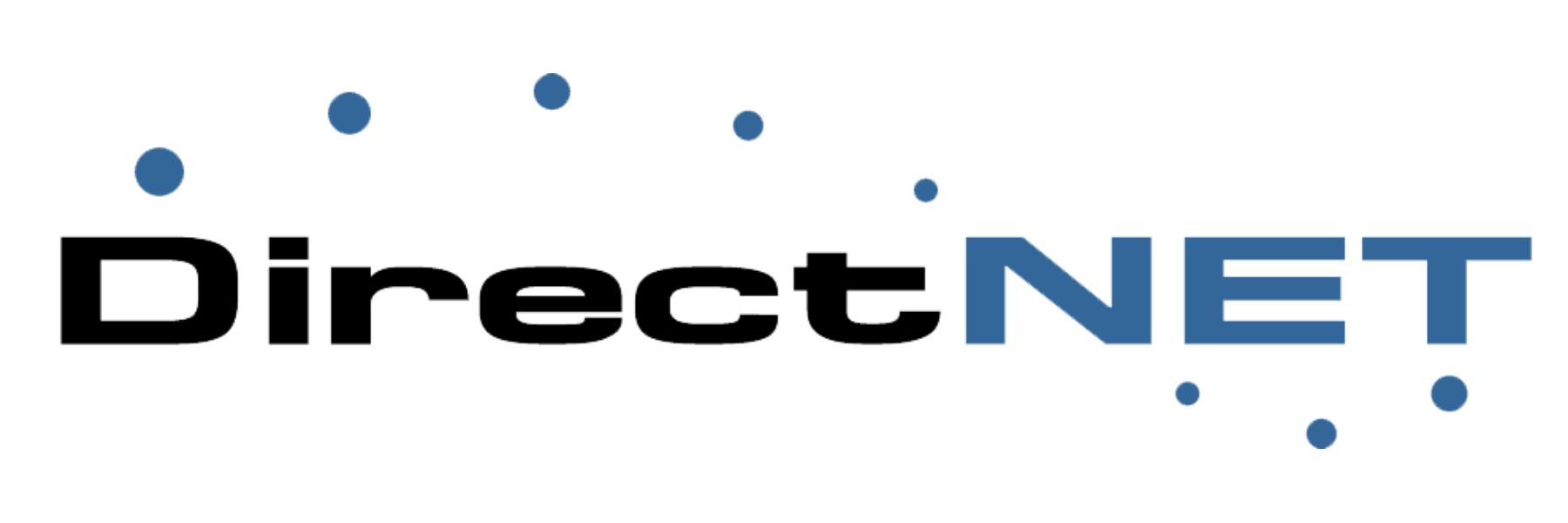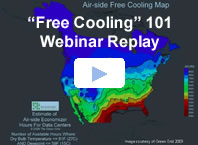Free cooling with Data Center Economizer Solutions
A number of recent high profile data centers, including the now famous Yahoo Chicken Coop, have shown the benefits of free cooling through air-side and water-side economization. Economizers utilize the natural outdoor environment to augment or replace mechanical air conditioning. In the case of the Lockport, NY Chicken Coop almost 100% of the cooling is provided by air-side economization for a projected 40% savings in energy consumption over conventional cooling methods.1
Economizer solutions are extremely effective in the right circumstance. The biggest question is, does it make economical sense to use free cooling. The answer largely depends on location, environmental factors, data center design, existing infrastructure, and tenant restrictions. 42U's team of data center engineers can help you analyze the true benefits and costs associated with economization, and if appropriate, help you design and implement the most economical, practical free cooling solution.
Air Side Economizers
Air-side economizers introduce outside air into the data center whenever conditions (temperature and humidity) are favorable. Instead of condensers, compressors, and pumps running full-bore, fans introduce cold air into the data center and expel hot air outside. By eliminating the refrigeration cycle from the heat exchange process, the energy (and therefore money) typically expended on mechanical cooling is saved. Because outside air is used to cool the IT equipment, this type of free cooling is often called direct cooling.
In 2008, when ASHRAE expanded its recommended inlet temperature upper bound to 80.6 degrees F (27 degrees C), they did so with the intention of allowing more economizer operating hours. A widely publicized air side economization proof of concept study conducted in 2007 – 2008 by Intel, strengthened the claim that higher inlet temperatures do not significantly affect IT equipment. In fact, over the 10 months of the study, 448 blades (running at a very high server utilization rate of 90% and a power density of more than 200 watts per square foot) were cooled by air side economization nearly 100% of the time. Environmental conditions in the 500 square foot container fluctuated widely, with inlet temperatures rising as high as 92 degrees F, humidity ranging from 5% to 90%, and fine dust from minimal filtration covering the compartment and servers. Server failure rates were nearly the same as seen in Intel's main data center: 4.46% with economization versus 3.83% in the main data center.2
Intel stated they reduced energy consumption by 74% through economization. Based on an energy cost of $0.08 per KWH and 91% economization usage, they estimated that a small 500-KW data center could save as much as $143,00 in energy costs per year.2 The Intel study was conducted in a temperate, dry climate with low relative humidity that allowed significant use of air side economization. While temperate environments realize the quickest ROIs, nearly all geographies in the US can attain some level of free cooling through air side economizers. How much can you save with air side economization?
Water Side Economizers
Water-side economizers, utilizing cooling towers or drycoolers, provide some level of secondary water loop cooling up to 100%. This heat exchanger uses outdoor air to aid the compressors in cooling the water that's supplied to the chiller system. Water side economization essentially pre-cools the water so that the chiller compressors need not work as hard or at all if temperature set points are raised enough. Water side economizers are often referred to as indirect economizers, because of the heat exchange first to water and then to the environment rather than to the environment directly.
As long as the relative humidity is low enough to facilitate evaporative cooling in the case of cooling towers or the ambient dry-bulb temperature is lower than the return chiller water for drycoolers, water side economizers provide reliable cooling with no noticeable change in the data center environment from outside air infiltration. Temperate areas with low relative humidity will receive the greatest benefit from water side economization, and with a variety of secondary heat exchange options, water side economization can be a viable free cooling strategy for your data center.
Product Combinations
There are a number of data center products that complement economizers. Aisle Containment strategies keep hot and cold air separate for greater potential efficiencies. Utilizing higher temperature chilled water results in the loss of air handler/in-row cooler capacity, however, some of these devices are very capable at raised water temperatures. With the right equipment, very good cooling densities are possible at water temperatures of up to 60+ degrees.
References
1. Fehrenbacher, K. (2010, September 19) Yahoo’s Chicken Coop-Inspired Green Data Center. Gigaom. Retrieved from:
http://gigaom.com/cleantech/now-online-yahoos-chicken-coop-inspired-green-data-center/
2. Intel. (2008, August). Reducing Data Center Cost with an Air Economizer. Retrieved from Intel:
http://www.intel.com/it/pdf/Reducing_Data_Center_Cost_with_an_Air_Economizer.pdf





